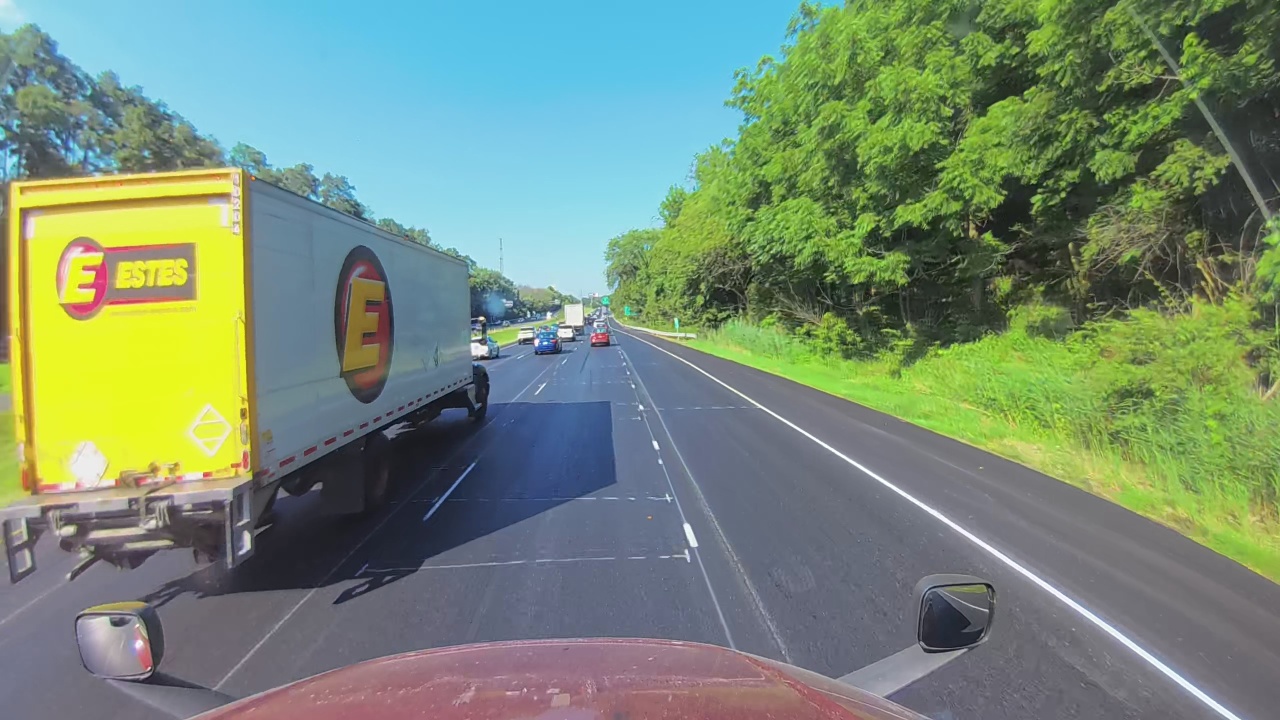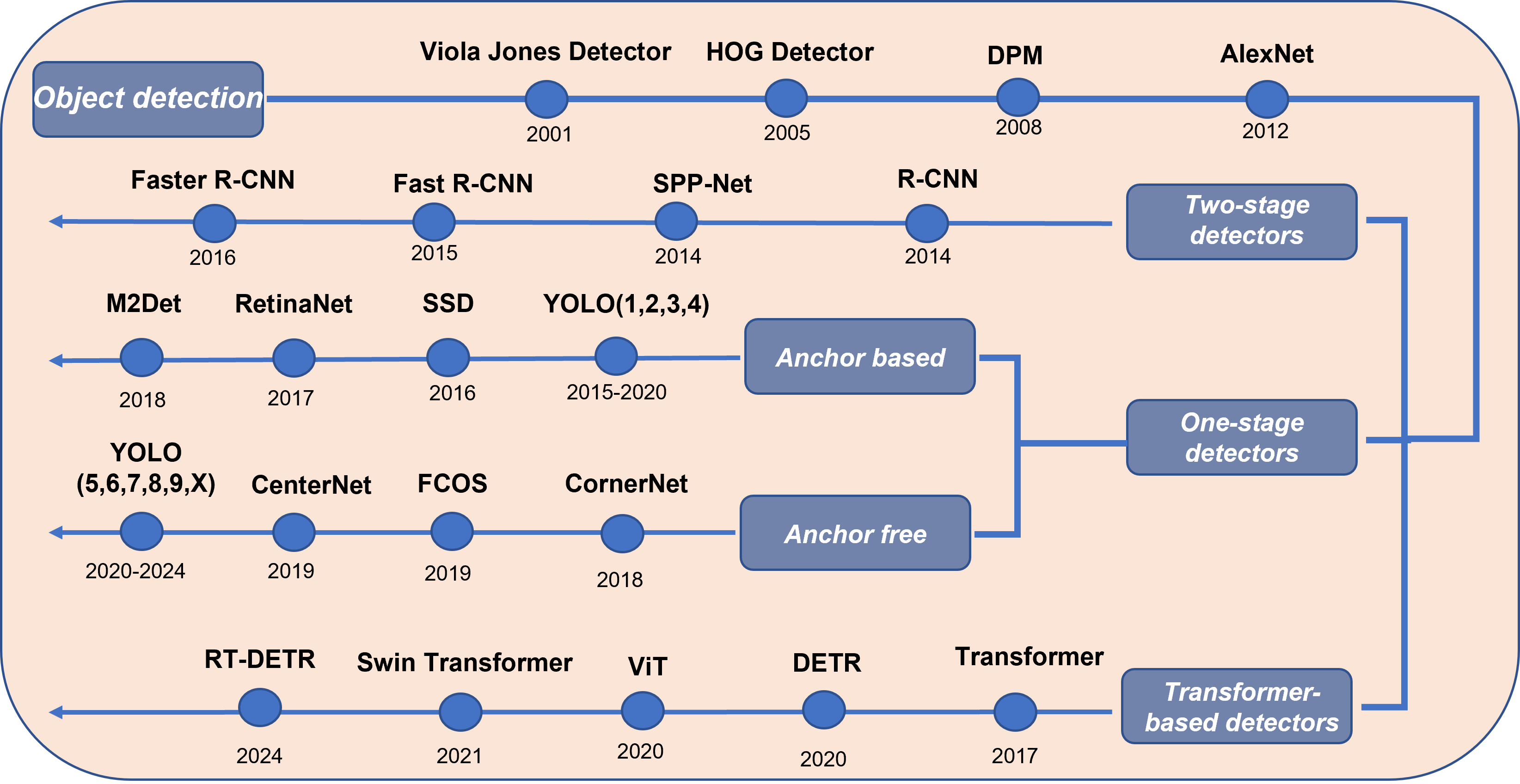Object Detection for Vehicle Dashcams using Transformers

0

Sign in to get full access
Overview
- This paper explores using transformer models for object detection in vehicle dashcam footage to improve road safety.
- The proposed method, called DashTR, combines a transformer-based backbone with a detection head to detect vehicles, pedestrians, and other objects in real-time dashcam video.
- Experiments show DashTR outperforms existing object detection models on dashcam benchmarks, indicating the potential of transformers for this application.
Plain English Explanation
The researchers in this paper developed a new AI system called DashTR that can automatically detect objects like vehicles, pedestrians, and other things in video from car dashcams. Dashcams are cameras installed on the dashboard of vehicles to record the view out the front windshield.
The key innovation in DashTR is using a transformer model as the backbone of the object detection system. Transformer models are a type of deep learning architecture that have shown impressive results in tasks like natural language processing and image recognition. The researchers hypothesized that transformers could also work well for detecting objects in dashcam footage, which has unique challenges like fast-moving subjects and changing lighting conditions.
To test this, the researchers trained and evaluated DashTR on standard benchmarks for object detection in dashcam videos. The results showed that DashTR outperformed other leading object detection models, suggesting transformers are well-suited for this application. Accurate object detection in dashcam footage has important applications for improving road safety and enabling advanced driver assistance systems in self-driving cars.
Technical Explanation
The researchers propose a new object detection model called DashTR that uses a transformer-based backbone for detecting vehicles, pedestrians, and other objects in dashcam video. The model consists of a transformer encoder that takes in the input video frames and generates visual features, which are then passed to a detection head that predicts bounding boxes and class labels for each detected object.
The transformer encoder in DashTR is based on the DETR architecture, which has shown strong performance on image recognition tasks. The researchers made several modifications to adapt DETR for the dashcam object detection task, including:
- Temporal Encoding: They incorporated temporal information by concatenating features from multiple video frames before passing them to the transformer.
- Spatial-Temporal Attention: The transformer's attention mechanism was extended to model both spatial and temporal relationships between objects.
- Focal Loss: They used a focal loss function to handle the class imbalance common in dashcam datasets, where there are many more background regions than objects of interest.
Experiments on standard dashcam object detection benchmarks like UA-DETRAC and NVIDIA AI City Challenge showed that DashTR outperformed existing state-of-the-art object detectors like Faster R-CNN and YOLOv5. The researchers attribute this to the transformer's ability to effectively model the spatial and temporal relationships in dashcam video.
Critical Analysis
The paper presents a compelling approach to object detection for dashcam video using transformer models. The key strengths are:
- Improved Accuracy: DashTR demonstrated superior performance compared to other leading object detectors on standard benchmarks, highlighting the potential of transformers for this task.
- Temporal Modeling: The incorporation of temporal information and spatial-temporal attention is an important innovation that helps DashTR handle the dynamic nature of dashcam footage.
- Potential for Real-Time Deployment: As the authors note, transformers can be efficiently implemented for real-time inference, making DashTR suitable for practical in-vehicle applications.
However, some potential limitations and areas for further research include:
- Dataset Bias: The benchmarks used, while standard, may not fully capture the diversity of real-world dashcam scenarios. Further testing on more varied datasets would be valuable.
- Computational Efficiency: While transformers can be optimized for real-time use, the model complexity may still pose challenges for resource-constrained in-vehicle systems. Exploring more efficient transformer architectures could be an avenue for future work.
- Interpretability: As with many deep learning models, the internal workings of DashTR may be difficult to interpret. Incorporating more explainable AI techniques could enhance the model's transparency and trustworthiness.
Overall, this paper presents a promising step towards leveraging transformers for improved object detection in dashcam video, with important implications for road safety and autonomous driving applications.
Conclusion
This paper introduces DashTR, a transformer-based object detection model designed for vehicle dashcam footage. By incorporating temporal information and spatial-temporal attention, DashTR demonstrates superior performance on standard benchmarks compared to existing object detectors. The researchers' work highlights the potential of transformers for this important real-world application, with promising implications for improving road safety and enabling advanced driver assistance systems. While further research is needed to address potential limitations, this paper represents an exciting advance in the field of computer vision for autonomous driving.
This summary was produced with help from an AI and may contain inaccuracies - check out the links to read the original source documents!
Related Papers


0
Object Detection for Vehicle Dashcams using Transformers
Osama Mustafa, Khizer Ali, Anam Bibi, Imran Siddiqi, Momina Moetesum
The use of intelligent automation is growing significantly in the automotive industry, as it assists drivers and fleet management companies, thus increasing their productivity. Dash cams are now been used for this purpose which enables the instant identification and understanding of multiple objects and occurrences in the surroundings. In this paper, we propose a novel approach for object detection in dashcams using transformers. Our system is based on the state-of-the-art DEtection TRansformer (DETR), which has demonstrated strong performance in a variety of conditions, including different weather and illumination scenarios. The use of transformers allows for the consideration of contextual information in decisionmaking, improving the accuracy of object detection. To validate our approach, we have trained our DETR model on a dataset that represents real-world conditions. Our results show that the use of intelligent automation through transformers can significantly enhance the capabilities of dashcam systems. The model achieves an mAP of 0.95 on detection.
Read more8/29/2024


0
Real-Time Indoor Object Detection based on hybrid CNN-Transformer Approach
Salah Eddine Laidoudi, Madjid Maidi, Samir Otmane
Real-time object detection in indoor settings is a challenging area of computer vision, faced with unique obstacles such as variable lighting and complex backgrounds. This field holds significant potential to revolutionize applications like augmented and mixed realities by enabling more seamless interactions between digital content and the physical world. However, the scarcity of research specifically fitted to the intricacies of indoor environments has highlighted a clear gap in the literature. To address this, our study delves into the evaluation of existing datasets and computational models, leading to the creation of a refined dataset. This new dataset is derived from OpenImages v7, focusing exclusively on 32 indoor categories selected for their relevance to real-world applications. Alongside this, we present an adaptation of a CNN detection model, incorporating an attention mechanism to enhance the model's ability to discern and prioritize critical features within cluttered indoor scenes. Our findings demonstrate that this approach is not just competitive with existing state-of-the-art models in accuracy and speed but also opens new avenues for research and application in the field of real-time indoor object detection.
Read more9/4/2024


0
The Progression of Transformers from Language to Vision to MOT: A Literature Review on Multi-Object Tracking with Transformers
Abhi Kamboj
The transformer neural network architecture allows for autoregressive sequence-to-sequence modeling through the use of attention layers. It was originally created with the application of machine translation but has revolutionized natural language processing. Recently, transformers have also been applied across a wide variety of pattern recognition tasks, particularly in computer vision. In this literature review, we describe major advances in computer vision utilizing transformers. We then focus specifically on Multi-Object Tracking (MOT) and discuss how transformers are increasingly becoming competitive in state-of-the-art MOT works, yet still lag behind traditional deep learning methods.
Read more6/26/2024


0
Real-Time Detection and Analysis of Vehicles and Pedestrians using Deep Learning
Md Nahid Sadik, Tahmim Hossain, Faisal Sayeed
Computer vision, particularly vehicle and pedestrian identification is critical to the evolution of autonomous driving, artificial intelligence, and video surveillance. Current traffic monitoring systems confront major difficulty in recognizing small objects and pedestrians effectively in real-time, posing a serious risk to public safety and contributing to traffic inefficiency. Recognizing these difficulties, our project focuses on the creation and validation of an advanced deep-learning framework capable of processing complex visual input for precise, real-time recognition of cars and people in a variety of environmental situations. On a dataset representing complicated urban settings, we trained and evaluated different versions of the YOLOv8 and RT-DETR models. The YOLOv8 Large version proved to be the most effective, especially in pedestrian recognition, with great precision and robustness. The results, which include Mean Average Precision and recall rates, demonstrate the model's ability to dramatically improve traffic monitoring and safety. This study makes an important addition to real-time, reliable detection in computer vision, establishing new benchmarks for traffic management systems.
Read more4/15/2024